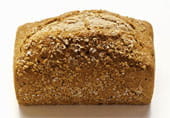by Mike Geary - Certified Nutrition Specialist, Certified Personal Trainer
Author of best-selling program: The Truth about 6-Pack AbsWith so much talk, confusion, and controversy in recent years about "carbs", I wanted to give you my take on good carbs vs bad carbs, low carb, and all the other "carb confusion" out there. I'll also show you one of my favorite healthy carbohydrate choices.
First of all, although I'm not a "low carb" extremist, I do believe that one of the main reasons so many people struggle to ever lose any body fat is that they are over consuming processed carbohydrates such as:
- cereals
- pasta
- rice
- bagels
- muffins
- breads (even whole grain varieties are not ideal if you're looking to lose body fat)
- sodas
- juices
- candies
- crackers
Note that I didn't include potatoes in the list of processed carbohydrates. Despite the trash talking they get from many fitness professionals, I think whole potatoes (not fries or chips!) are a nutrient-dense healthy food.
Even carbohydrate sources that most people think are "healthy" really are just excess calories that don't really deliver a whole lot of nutrient density... and many types of breads and cereals pretend to be "whole grain" with clever marketing while in reality the first ingredient in them is refined flour, which is just going to shoot your blood sugar through the roof.
My take on it is that the majority of people struggling to lose body fat would do much better following these types of carb guidelines:
1. Reduce your grain-based carb products in the diet (cereal, pasta, rice, crackers, etc) and focus more of the diet on healthy grass-fed and/or free-range meats and eggs, grass-fed raw dairy, and TONS of vegetables and fruits. I understand that it's very hard for most people to give up entirely their breads, cereals, and pastas. But don't worry, just save the grain-based carbs for a 1-day per week "cheat day", and you can still do just fine!
2. Instead of the grains for most of the carbs, try getting most of your carbs from vegetables, sweet potatoes, and a variety of whole fruits and berries (NOT fruit juices, which remove the beneficial fiber as well as other essential parts of the fruit).
3. If you're going to eat any grains at all, focus on the most nutrient dense and fibrous portions of the grain... the germ and bran... this means that the best parts are getting oat bran instead of oatmeal, and using rice bran to add to your yogurt, cottage cheese, salads, soups, etc. This way you get all of the most beneficial nutritious parts of grains without all of the excess starches and calories.
Note on wheat germ -- although wheat germ is a nutrient dense food (compared to the nutrient-poor starch portion of wheat), beware of the gluten in wheat if you have any intolerance. Many people have wheat/gluten intolerances and don't even realize it. It could be worth it to get tested to see how your body is handling wheat.
Also, for best results with grains in general, try to stick only to sprouted grain products if you're going to eat any grains at all. The sprouting of grains helps to eliminate some of the "anti-nutrients" in some grains, and also improves digestion of those grains.
4. To replace the void if you're used to consuming lots of bread, pasta, cereals, and other carb sources... try filling that void with more healthy fats such as nuts, seeds, avocados, nut butters as well as healthy proteins such as raw grass-fed dairy and meats, whole free-range organic eggs, etc. Healthy fats and proteins go a long way to satisfying your appetite, controlling proper hormone and blood sugar levels, and helping you to make real progress on fat loss.
With all of that said, here's one of my favorite carb sources that is high in fiber as well as tons of vitamins, minerals, and antioxidants:
Sweet potatoes or yams
I always choose the orange varieties instead of the white varieties of sweet potatoes. One of the problems with sweet potatoes is the time it takes to bake a sweet potato for 1 to 1.5 hrs.
I cook my sweet potatoes in a different way that only takes 5 minutes and they come out delicious... and no, I would NEVER use a microwave (I talk more about why never to use a microwave to cook your foods in this article).
The easiest and quickest way I've found to cook up a sweet potato is to slice it up into thin slivers and put it into a pan that you can cover with a lid. I add a touch of butter, virgin coconut oil (beneficial medium chain triglycerides), and about 3-4 Tbsp of water and simmer with a covered lid for about 5 minutes.
When the sweet potatoes are soft, then add a little cinnamon and maybe a touch of the natural sweetener stevia (if you want a little more sweet flavor) and you're all set with a delicious healthy carb side dish to go with any meat dish. Add a side salad and you've got the perfect lean-body meal plan.
If you liked this article, feel free to share it with your friends on facebook, twitter, etc:






 You've
probably heard conflicting opinions out there in the nutrition world if
breads, cereals, and other grain-based foods are good for you or not.
On one hand, you've got the mega-powerful multi-billion
You've
probably heard conflicting opinions out there in the nutrition world if
breads, cereals, and other grain-based foods are good for you or not.
On one hand, you've got the mega-powerful multi-billion  food companies that make huge profits off of cheap grain-based
foods and they attempt to convince the public that breads, cereals, etc
are "healthy".
food companies that make huge profits off of cheap grain-based
foods and they attempt to convince the public that breads, cereals, etc
are "healthy".




